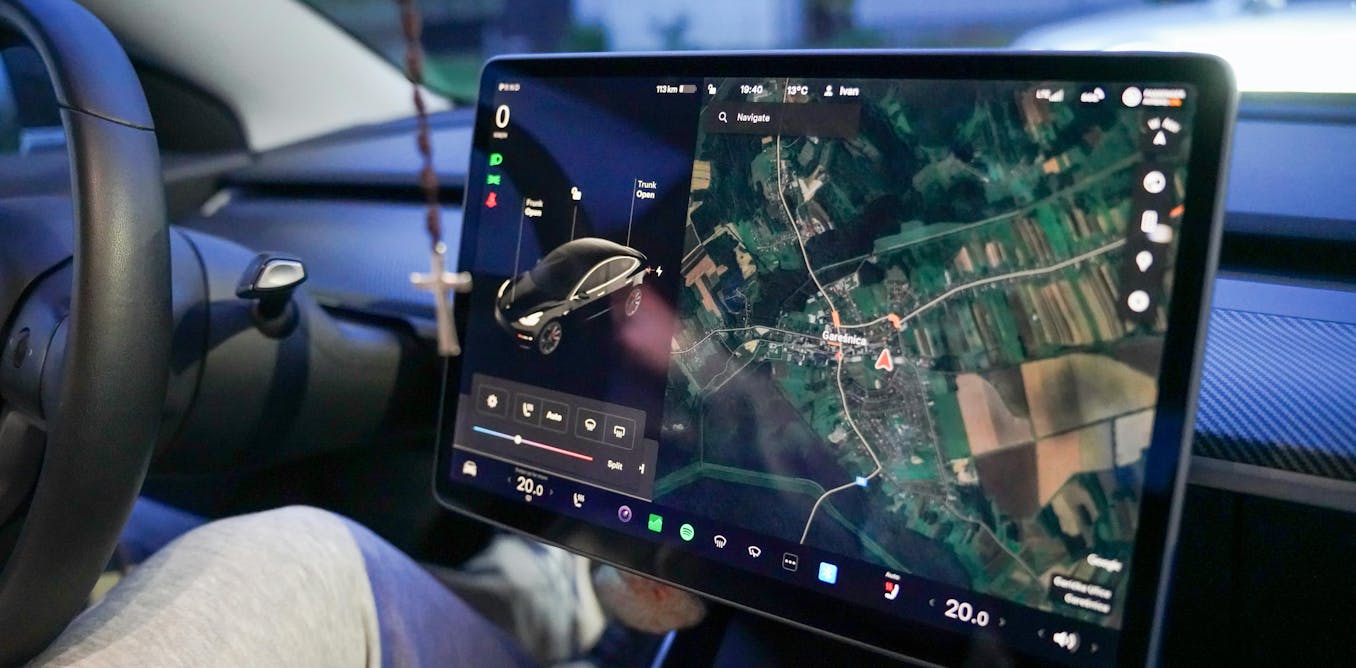Scientists have long pondered the possibility of retrieving the infamous Titanic from its watery grave at the bottom of the Atlantic Ocean. Now, new plans proposed by scientists could potentially change everything we know about salvaging the historic wreck. In a recent video, various methods for raising the Titanic were explored, each presenting its own set of unique challenges and complexities.
One method discussed in the video involved the use of buoyancy tanks, which would be attached to the Titanic’s structure and gradually filled with air to lift the ship to the surface. Another method proposed the use of underwater balloons, which would provide an upward force on the wreck as they inflated. Other ideas included cable lifting, submersible cranes, sectional dismantling, cryogenic freezing, mass displacement, magnetic lifting, hydraulic lift systems, and controlled explosions.
Each method presented in the video offered a different approach to the challenging task of bringing the Titanic back to the surface. While some methods focused on utilizing advanced technology, others relied on more traditional salvage techniques. Regardless of the approach, the ultimate goal remains the same – to retrieve the Titanic and preserve its historical significance. The new plans introduced in the video have sparked a renewed interest in salvaging the iconic wreck, offering hope for a potential future recovery mission.
Watch the video by Top Discovery
https://www.youtube.com/watch?v=uA_n3RYvChA
Video Transcript
Getting into the middle of the Atlantic now because we’re going to look at one of the most famous shipwrecks of all time have you ever wondered how we might bring the legendary Titanic back from its watery grave scientists have proposed some fascinating methods let’s dive into these intriguing ideas and
Imagine the once thought impossible raising the Titanic number one buoyancy tanks floating the UNF flatable imagine for a moment the Colossal Titanic resting silently at the bottom of the ocean for over a century now Envision it Rising back to the surface one of the most discust methods to achieve this feat involves buoyancy
Tanks but how would this work let’s explore buoyancy tanks are large air filled containers that when attached to a submerged object can increase its buoyancy potentially lifting it to the surface the concept is simple in theory but complex in execution especially considering the Titanic’s enormous size
And the depth at which it rests the process would start by attaching these tanks to the Titanic structure but here’s a challenge the wreck lies at a depth of about 12,500 ft where the pressure is immense around 5,500 lb per square in this pressure could easily Crush standard tanks
Therefore these tanks would need to be incredibly strong designed to withstand the harsh conditions of the deep sea once securely attached The Next Step would be to gradually fill these tanks with air this air would be pumped down from the surface through long tubes as the tanks fill their buoyancy would
Increase slowly lifting the Titanic the idea is to do this gently to avoid placing too much stress on the century old wreck which is already fragile and deteriorating however there’s another hurdle the Titanic’s current state is delicate over the years the ship has become a part of the seabed with parts
Buried and others teetering on the edge of collapse any movement could potentially cause it to break apart therefore this method would require precise placement and a gradual controlled process of inflation to ensure the ship’s Integrity the tanks would also need to be distributed evenly to balance the lift if not the ship
Could tilt or turn during the ascent causing irreparable damage engineers and scientists would have to meticulously calculate the number of Tanks required their placement and the rate of air fill to ensure a stable and uniform lift now let’s talk about the sheer volume of air needed to lift something as massive as
The Titanic we’d need an enormous amount of air this raises logistical questions how do we store and pump this much air from the surface to the ocean’s depths the answer lies in using powerful compressors and a network of durable pipes capable of withstanding the pressure and the long journey to the ocean Floor number two underwater balloons the upward push imagine a cluster of large durable balloons like a bunch of giant jellyfish slowly lifting the Titanic from its Century long Slumber on the ocean floor this is the vision behind the underwater balloon method a concept as intriguing as it is challenging but
How would this work and what makes it different from the buoyancy tank method underwater balloons also known as lift bags are often used in smaller scale Salvage operations the basic principle is similar to buoyancy tanks increase the object’s buoyancy to bring it to the surface however the application and
Technology behind these balloons offer a different set of advantages and challenges first ly these balloons are typically made from strong flexible materials like reinforced rubber or synthetic fabrics they need to be robust enough to withstand the immense pressure of the deep sea yet flexible enough to be inflated underwater the process
Begins with deploying these deflated balloons to the Titanic’s resting place this might be done using remotely operated vehicles rovs or deep sea divers depending on the depth and conditions once in place the balloons would be gradually inflated with air pumped down from the surface as they inflate their buoyancy increases
Providing an upward force on the Titanic the advantage of balloons over rigid tanks is their flexibility which could allow for a more adaptable and forgiving lift process this could be particularly beneficial given the Titanic’s fragile state as the balloons can conform to the shape of the wreck and distribute the
Lifting Force more evenly however this method is not without its challenges the first is the sheer number of balloons required to lift something as massive as the Titanic we would need a vast array of these balloons all working in concert this raises logistical questions about deployment inflation and coordination
Each balloon would need to be carefully placed and monitored to ensure an even and stable lift number three cable lifting the pull from above o picture this a network of strong cables descending into the depths of the ocean each one meticulously attached to the Titanic ready to exert a
Pull strong enough to challenge the forces that have kept it submerged for over a century this is the vision of the C lifting method a blend of brute strength and careful engineering but how exactly would this work and what are the challenges and considerations involved cable lifting in essence
Involves using strong cables attached to cranes or ships to lift an object for the Titanic this would mean deploying a fleet of ships equipped with powerful winches and cranes each capable of lifting thousands of tons these ships would be positioned above the wreck with cables carefully lowered and attached to
Various points on the ship’s structure the first challenge is the attachment of these cables the Titanic lies in two main pieces with a debris field scattered around the cables would need to be attached in such a way that the lift is evenly distributed across the structure this requires a thorough
Understanding of the Rec’s current condition and structural Integrity it’s not just about attaching cables it’s about finding the right points to attach them to ensure a balanced lift Titanic experts have worked out that when it actually imploded at the top of the boiler room but the task doesn’t stop
There the strength of the cables and the the lifting capacity of the cranes or ships must be enormous remember we are talking about lifting a ship that originally weighed over 52,000 tons now likely heavier due to sediment accumulation the cables would need to be made of materials capable of
Withstanding not just this weight but also the corrosive effects of seawater and the immense pressure of the deep sea moreover the lifting process would need to be synchronized perfectly each Crane or ship would need to lift at the same rate to prevent the wreck from tilting or breaking apart this synchronization
Poses a significant challenge given the unpredictable nature of deep sea conditions and the potential for shifts in the W’s position another major consideration is the depth the Titanic rests at about 12,500 ft a depth that poses challenges not only in terms of pressure but also in terms of the length of cables
Required these cables would need to be incredibly long yet strong and flexible enough to handle the lift the deeper the water the more cable is needed and the greater The Strain on the lifting equipment number four submersible cranes deep sea Giants at work visualize the depths of the ocean a realm of Perpetual
Darkness and immense pressure being illuminated by the lights of a colossal submersible crane poised to undertake one of the most ambitious undertakings in Mar time history lifting the Titanic this chapter delves into the concept of using submersible cranes a feat that combines cuttingedge technology with daring engineering submersible cranes are not
Your average construction cranes these specialized Giants are designed to operate in the extreme conditions of the deep sea they represent a remarkable Fusion of Robotics Hydraulics and Structural Engineering all built to withstand the crushing pressure and and corrosive environment of the ocean’s depths the idea is straightforward yet audacious these cranes either operating
From the surface or as independent submersibles would descend to the Titanic’s resting place equipped with advanced technology they would carefully maneuver around the wreck attaching lifting cables or harnesses to strategic points given the Titanic’s fragile state this step would require precision and delicacy likely aided by remote operator vehicles rovs and sophisticated
Monitoring systems we be love to have because we cannot see what we do so once the cranes are securely attached to the wreck the lift would commence but this is where things get tricky the cranes must be powerful enough to lift the massive weight of the Titanic yet sensitive enough to adjust
The lift in real time to prevent any part of the wreck from bearing too much strain this balance is crucial to avoid causing further damage to the already deteriorating structure the depth at which the Titanic Lies Over 12,500 ft below the surface adds another layer of complexity at such depths the cranes
Would have to be extraordinarily robust the pressure is so intense that any vulnerability in their design could lead to catastrophic failure therefore every component of these submersible cranes must be meticulously designed and tested for deep sea conditions another aspect to consider is the maneuverability of these cranes they must be able to
Navigate the unpredictable seabed avoiding any further disturbance to the wreck or the surrounding area this requires not only Advanced propulsion systems but also real-time navigation and obstacle avoidance Technologies number five sectional dismantling piece by piece strategy imagine disassembling a historic artifact as massive and delicate as the
Titanic piece by by piece in the Abyssal darkness of the ocean this is the essence of the sectional dismantling method a meticulous peac meal approach to salvage it’s a strategy that combines Precision Engineering with a surgeon’s delicacy but how feasible is it and what challenges does it present sectional dismantling involves
Cutting the Titanic into smaller more manageable sections and then lifting these sections to the surface individually this method might seem straightforward but the logis ICS and Technical challenges are anything but the first step is to map and assess the entire structure of the wreck identifying the best points for cutting
While preserving as much of the historical Integrity as possible cutting the Titanic underwater would likely involve sophisticated equipment such as remotely operated underwater Vehicles rovs equipped with powerful cutting tools these could include hydraulic shears Diamond Wire saws or other specialized equipment designed to work in deep sea conditions the Precision
Required for this operation cannot be overstated each cut must be planned and executed with utmost care to prevent causing undue stress on the wreck structure which could lead to collapse or further deterioration once sections are cut each piece would need to be individually lifted to the surface this
Task could be accomplished using a combination of methods previously discussed such as buoyancy tanks underwater balloons or cable lifting the challenge here is to manage the lift so that each piece remains intact during the ascent given the varying sizes and weights of the pieces this would require careful planning and potentially a
Variety of lifting methods another major challenge is the Titanic’s depth and the environmental conditions at the site at over 12, 500 ft deep the extreme pressure and cold temperatures complicate the operation cutting and lifting equipment must be able to operate reliably under these conditions and the risk of equipment failure is a constant
Concern number six cryogenic freezing science fiction in the Deep picture the Titanic a majestic but tragic relic of the past suddenly encased in a block of ice at the bottom of the ocean ready to be lifted whole to the surface this is the Ence of the cryogenic freezing method a concept that
Seems to LEAP straight out of a science fiction novel but could this icy idea hold water in the real world and what are the mammoth challenges it faces cryogenic freezing involves rapidly freezing the entire wreck to solidify it into one cohesive piece the theory behind this is that a solid block of ice
Would be easier to lift as one unit reducing the risk of the wreck breaking apart during the ascent to achieve this a technology would need to be developed that can rapidly and massively freeze objects at Great depths the first challenge is the sheer scale of the technology required
Freezing something as massive as the Titanic approximately 882 ft long and weighing over 52,000 tons would require an unprecedented amount of freezing power this would likely involve deploying a system capable of circulating a super cooled liquid or gas around the wreck reducing the temperature rapidly enough to freeze it
Solid before the harsh ocean conditions can interfere depth and pressure again play a critical role at 12,500 ft where the pressure is immense and the water temperature hovers near freezing any cryogenic system would need to be robust enough to operate under these extreme conditions it must also be capable of
Overcoming the insulating properties of seawater which could slow down or unevenly distribute the freezing process another significant hurdle is the impact of Rapid freezing on the wreck itself the Titanic has been on the ocean floor for over a century and its structure has weakened considerably the process of freezing especially rapidly could cause
Additional stresses on the ship’s framework potentially leading to cracks or shattering much like what happens when a hot glass is suddenly plunged into cold water number seven Mass displacement making the Titanic light Envision filling the Titanic a colossal steel structure resting in the ocean’s Abyss with a material so buoyant it
Begins to counteract the weight of a century of water logged history this is the principle behind the mass displacement method making the Titanic lighter to facilitate its Ascent to the surface but is this method as straightforward as it sounds and what complexities lie beneath its surface the mass displacement method involves
Pumping a buoyant material such as foam into the Titanic structure this material would displace the water inside the wreck increasing its overall buoyancy and causing it to rise toward the surface the concept is based on the simple physics of buoyancy an object will float if it is less dense than the
Fluid it is in the first step in this process would be to thoroughly map the interior of the Titanic this mapping is crucial to identify the best points for injecting the buoyant material and to estimate the volume needed to achieve sufficient lift given the Titanic’s current state with its intricate layout
And sections buried in sediment this would be a complex task likely requiring Advanced sonar and 3D Imaging Technologies once the mapping is complete the next challenge is the actual injection of the buoyant material this would involve sophisticated pumping systems capable of delivering the material deep into to the Titanic
Structure these systems must be precise and Powerful able to work in the extreme conditions of the deep sea the material itself would need to be specially formulated to remain stable and buoyant under high pressure and over the duration of the ascent however this method is not without significant
Challenges one of the primary concerns is the structural Integrity of the Titanic the wreck has been deteriorating for over a century and introducing a foreign material at high pressure could cause further damage the material must be injected in a way that supports the Rec’s structure rather than exacerbating its weaknesses another challenge is
Controlling the ascent as the Titanic becomes more buoyant it would start to rise this Ascent must be carefully managed to ensure that the lift is even and controlled an uncontrolled or rapid rise could lead to the wreck breaking apart are colliding with obstacles on the seafloor number eight magnetic lifting the power of
Attraction imagine harnessing the invisible yet powerful force of magnetism to lift the Titanic a feat akin to a magic trick on a colossal scale this is the concept of magnetic lifting using powerful electromagnets to raise the historic wreck intriguing as it sounds this method brims with complexities and challenges that push
The boundaries of both imagination and feasibility magnetic lifting would involve using large electromagnets to exert a magnetic force on the ferris iron containing parts of the Titanic theoretically if the magnets are strong enough they could lift the ship or its pieces from the ocean floor this method requires a deep understanding of the
Titanic’s composition and the distribution of feris materials within its structure the first challenge lies in the creation of magnets powerful enough for such a task these would not be ordinary magnets but industrial strength electromagnets capable of generating an immense magnetic field such magnets would need to be designed
To function under the extreme pressure and cold temperatures of the deep sea a significant engineering feat moreover the deployment of these magnets presents its own set of logistical challenges they would need to be transported to the Titanic’s resting place likely via specialized sub immersible Vehicles equipped to handle their size and weight
Once in place the magnets would need to be precisely positioned to align with the feris parts of the wreck a task Complicated by the Titanic’s deteriorated state and its resting position on the seafloor another consideration is the Titanic’s structural Integrity the wreck has been underwater for over a century
And its condition has deteriorated significantly applying a strong magnetic force could could potentially cause parts of the ship to break or collapse especially if the ferris materials have weakened over time this raises questions about the viability of the lift and the potential risk of causing further damage to the wreck number
Nine hydraulic lift system elevating history Envision a network of powerful hydraulic jacks strategically placed beneath the ti T anics remains slowly and steadily elevating this historic Leviathan from its Century long rest on the ocean floor this is the concept of using a hydraulic lift system a method combining mechanical prowess with
Precise control but how would such a system work in the extreme depths of the ocean and what challenges would need to be overcome the hydraulic lift system involves placing a series of hydraulic jacks beneath the wreck these Jacks once activated would gradually Elevate the Titanic transferring the weight from the seabed
To the lift system the idea hinges on a balance of strength control and delicacy a true engineering challenge given the Titanic size and fragility first and foremost the design of these hydraulic jacks would need to be exceptional they must be strong enough to support the weight of the
Titanic which even in its deteriorated state is substantial more importantly they need to with stand the immense pressure and corrosive environment of the deep sea functioning reliably at a depth of over 12,500 ft deploying the hydraulic jacks to the Titanic’s resting place would be a feat in itself this would likely
Involve specialized submersible Vehicles capable of transporting and positioning heavy equipment in deep Waters each Jack would need to be carefully placed to ensure an even distribution of lifting Force this requires precise knowledge of the Titanic current structural State and a detailed plan to ensure the lift does
Not cause the wreck to collapse or break apart once in place the real challenge begins each hydraulic jack would need to be synchronized to lift at the same rate this is crucial to avoid placing uneven stress on the Titanic structure which could lead to catastrophic failure the operation would require real-time
Monitoring and adjustments likely controlled remotely from a surface vessel another significant consideration is the duration of the lift given the depth and the need for a controlled Ascent this process could take a considerable amount of time maintaining the hydraulic systems Integrity over this period especially in such harsh conditions would be a constant
Concern number 10 controlled explosion destructive preservation imagine the Eerie Silence of the deep sea suddenly disrupted by a calculated controlled explosion designed to break the Titanic into manageable pieces for retrieval this concept of using controlled explosions a blend of Destruction and preservation presents a paradoxical yet technically feasible
Method but what are the intricacies of this approach and what challenges does it pose in the context of salvaging a historic wreck controlled explosion involves using precise targeted detonations to fragment the Titanic into smaller sections these sections would then be easier to lift to the surface the approach while seemingly
Aggressive is based on a careful balance between the force necessary to break the wreck apart and the need to preserve as much of its historical Integrity as possible the primary challenge lies in the planning and execution of the explosions each detonation must be meticulously calculated to achieve the desired fragmentation without causing
Excessive damage this this requires a detailed understanding of the Titanic’s structure including the strength of its materials and the current state of deterioration experts in Demolition and underwater explosives would need to collaborate closely using Advanced modeling and simulation tools to predict the outcomes of each explosion these simulations would inform decisions about
The placement timing and strength of the explosives ensuring that the force is distributed in a way that minimizes harm to the wreck deploying the explosives presents its own set of challenges this would likely involve remotely operated Vehicles rovs equipped with precise handling capabilities to place the charges in the predetermined locations
The depth at which the Titanic rests over 12,500 ft adds complexity to this task requiring equipment that can operate reliably under extreme pressure and in a corrosive environment
Video “Scientists New Plan To Retrive the Titanic Changes Everything!” was uploaded on 02/09/2024 to Youtube Channel Top Discovery

The post “New Scientific Plan to Retrieve the Titanic Alters Everything! – Video ” by GretAi was published on 03/15/2024 by news.gretai.com































![Animals vs. Water: Hilarious Moments! 😂 [2025 Edition] – Video Animals vs. Water: Hilarious Moments! 😂 [2025 Edition] – Video](https://i.ytimg.com/vi/F1_AvAuQI5M/maxresdefault.jpg)





